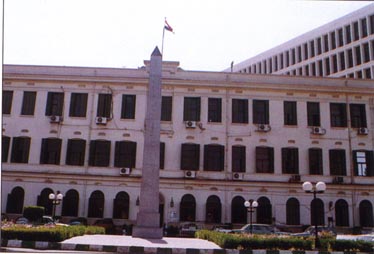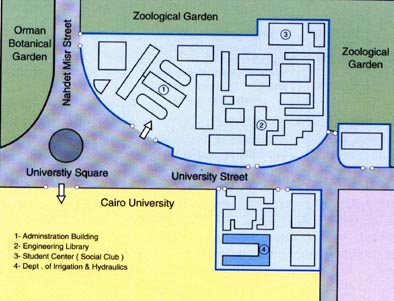|
|
|
INTRODUCTION
|
|
The water demand for various
needs is increasing. Our capacity to capture and store fresh water has
expanded throughout history, and efforts to learn to use it more efficiently
are continuing. As the world's population grows, the average amount of
renewable fresh water available to each person declines .
The more is known about water resources ,river
networks and the spatial and temporal flow distribution, the better the
projects can be planned for the benefits of all users . As the flow of water
in rivers does not recognize political boundaries ,
hydrologists must be able to deal with the hydrologic basins not only from
technical aspects but also from political and legal point of view. With over
200 river and lake basins bordered by two or more countries and aquifers
crossing international borders, the potential for increased regional
conflicts over shared resources as population pressures escalate is
substantial, particularly in arid and semi-arid regions where water is
already scarce. Nowadays coordinated management of international river basins
is an exception rather than the rule. The main objective of the Shared Water Resources Development (SWRD) program is to train water resources professionals in the development and management of international rivers and their basins. It covers the relevant engineering, political, geographical, socio-economic and environmental aspects of the subject. The program is designed to broaden the views of the water resources professionals by dealing with the technical, social, legal and political issues in an integrated approach. The SWRD is held at the Department of Irrigation and Hydraulics of the Faculty of Engineering of Cairo University. Cairo University, located in Giza across the Nile from Cairo City, is the largest and oldest university established in Egypt to provide formal modern education in practically all fields (www.cu.edu.eg). It was founded on its current premises in 1928. It includes 23 colleges and institutes serving about 155000 students with some 3200 faculty members, 2400 teaching assistants and 12250 employees. The Faculty of Engineering comprises fourteen scientific departments, several specialized research & development centers, modern laboratories and computational facilities, and an engineering library. The number of the faculty members approaches 1000 and the number of under-graduate students is about 9400. The number of M.Sc. and Ph.D. degrees awarded during the academic year 1995/1996 was nearly 250. The Irrigation and Hydraulics Department of Cairo University has a well designed U-shaped layout with three connected sections of an area of some 2400 square meters for staff offices and teaching rooms. The hydraulic laboratory occupies the entire ground floor of the building. Activities of the laboratory cover undergraduate and post-graduate teaching and research as well as modeling and consultation. The permanent staff of the department is involved in a multitude of research and consulting services covering all aspects of water resources planning, development and management. The SWRD activities are housed in a modern facility within the department premises over an area of some 320 square meters. The space constitutes a lecture room, a conference room, a computer laboratory, a specialized library, together with rooms for the necessary administrative support.
The SWRD has been established through close cooperation between Cairo University and the Ministry of Water Resources and Irrigation (MWRI) in Egypt. MWRI is the governmental body that authorizes water use and is responsible for management and administration of the national water resources, surface and groundwater. The ministry schedules releases from the High Aswan Dam, approves diversions from the system and has the authority to implement the natural water quality legislation. The ministry has accumulated
vast knowledge and experience to deal with the Nile River and to manage its
water. The ministry today is adopting state of the art methods and
technologies to manage the water resources of Egypt. Professionals from
various sections within MWRI will be called upon to provide their own
expertise to the SWRD students. These sections include; the Planning Sector
(forecasting center), the Irrigation Department, the High Aswan Dam
Authority, the Nile Water Sector, and the National Water Research Center with
its 12 institutes. |
[ Home ] [ Introduction ] [ Curriculum ] [ Courses ]
[ Information ] [ Requirements ] [ Fees ] [ Staff ] [ Greater Cairo ]


